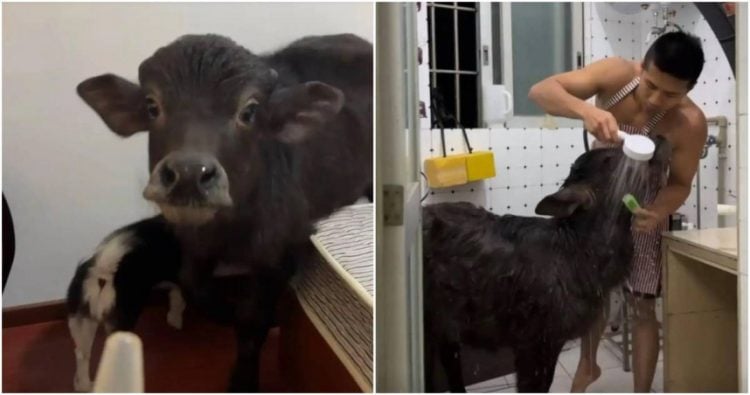Nestled in the heart of a vast farmland in East China’s Zhejiang province, the small village of Zisiqiao has a pretty common look, but it hides a scary secret. The aptly names “snake village” is home to thousands of the most feared snaked species on Earth.
Snakes are a vital ingredient in Chinese medicine, and are also widely used to make soup and wine believed to increase a person’s immunity. As the number one snake village in China, Zisiqiao breeds and sells over 3 million snakes per year, to satisfy the ever-increasing demand. The 160 snake-breeding families living here now boast an annual income of several thousands yuan, and in this Year of the Snake, a significant profit increase is expected. The once poor village of Zisiqiao is now the envy of similar rural communities, with some of the larger snake farms making tens of thousands of dollars from this lucrative business. Obviously, it’s not the easiest job in the world, and most breeders admit they have been bitten several time, even by deadly snakes, but the rewards are definitely worth the risk.
Photo: Eugene Hoshiko/Oriental IC
It might be known as China’s Snake village today, but until nearly three decades ago,Zisiqiao was just an ordinary rural settlement, where people had to make due with an average income of 100 yuan ($16). 62-year-old Yang Hongchang, nicknamed the Snake King, is credited for the community’s new found fortune. Forty years ago he worked as a farmer, as the only member of his poor family able to slave all day in the fields. Unfortunately, at one point he caught a spondylitis disease that caused excruciating pain in his waist. Despite the constant agony, he continued to work until he couldn’t even sleep from the pain. A doctor suggested he drink medicinal wine made from the red-banded snake, and since he could afford to buy the snake from the market, Yang decided to catch the slithering reptiles himself, in the mountains near the village. Miraculously, the snake wine actually cured his condition, but the snake catching experience got him thinking about the sustainability of Chinese medicine.
Photo: Eugene Hoshiko/Oriental IC
“I was thinking how we could sustain the industry if we continued catching wild snakes and put them in danger of extinction,” Hongchang said. So in 1985, he borrowed 10,000 yuan and started an unprecedented snake breeding experiment right in his backyard. It proved unsuccessful at first, but he kept trying, and in 1987, he managed to incubate about 30,000 snake eggs and sell the baby snakes for 80,000 yuan. It was a huge sum back then, and as the news spread in Zisiqiao, other families became inspired to invest in this dangerous but lucrative business. It was the beginning of a new age for the small Chinese village.
Originally, snake breeding was done just by putting males and females together, but after doing meticulous research, the residents of Zisiqiao have learned how to select the best females, provide them with an appropriate diet, and even how to incubate the eggs to increase survival rates. After the snakes are dried, they are usually shipped to medicine factories in China, but many products from Zisiqiao are exported to countries like Japan, United States or Germany.








